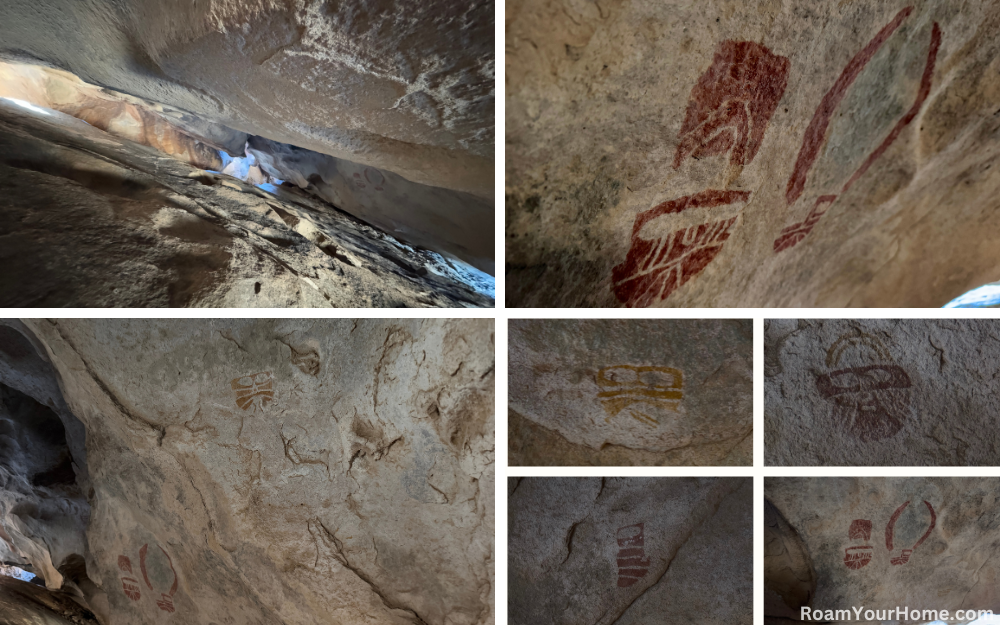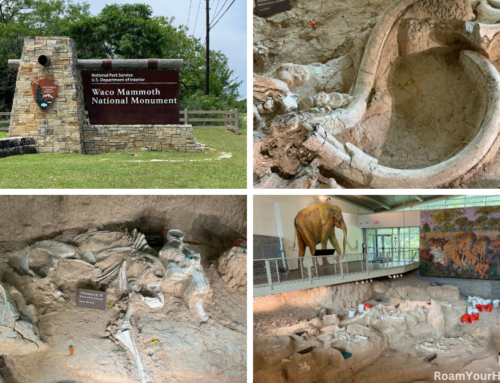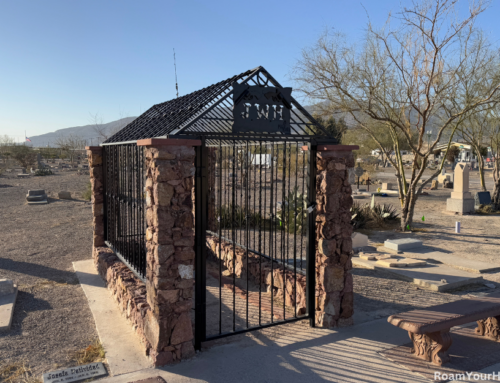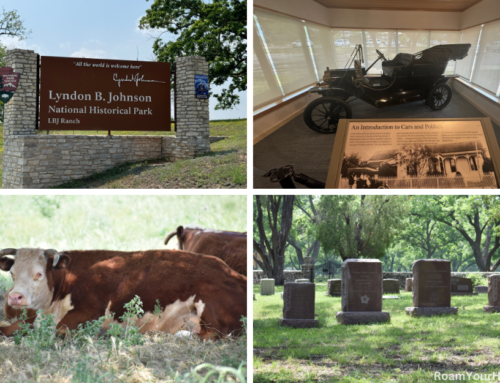
Exploring Hueco Tanks State Park: Texas’ Hidden Desert Oasis
Hueco Tanks State Park & Historic Site is in the rugged desert of West Texas, about 32 miles northeast of El Paso. The park is renowned for its stunning rock formations, ancient pictographs, and world-class bouldering.
The park takes its name from the huecos (“whey-coes”) —natural rock basins that collect and store rainwater, making the area a rare oasis in the arid desert. These water-filled depressions have supported life for thousands of years, attracting Native American tribes, Spanish explorers, and settlers.
Visiting Hueco Tanks State Park & Historic Site
We visited Hueco Tanks in the middle of winter. You need a reservation to get in the park but heads up, they book up months in advance, especially during the cooler winter months. I found this out the hard way when I could not get a reservation.
My wife and I were determined to try and visit either way. We arrived at the park just after the gates opened. To my surprise, there was already a 15-car line waiting. I got out to speak with a park ranger. He told me we would likely get it, but it would not be before ten when they allow people in to offset reservation no-shows. The park ranger explained that this is peak bouldering season because of the cool weather, and reservations are very competitive.
For the next 2 hours, my wife and I patiently sat in our car, waiting before we were allowed to enter the park. Rangers strictly enforce the 70 visitors’ capacity cap for the park. Once in, we had to watch a mandatory orientation video and pay a small entrance fee.
We were on a road trip across the country, were behind schedule, and had to make up some time. I asked a park ranger what they recommended doing if you only had a few hours before you had to leave. He asked if we were interested in bouldering, to which I said not this time.
Then, without missing a beat, “Do some of the shorter trails and see some easier-to-view pictographs. There is a short trail outside the interpretive center that is great. Also, the Site 17 trail is awesome. But the best place to visit is Cave Kiva.” he explained.
Looking at the park map Cave Kiva was on there, but it was on the side of North Mountain with no trail leading to it. “How do you get there?” I asked. The ranger handed me a map and said just follow these directions. He then took my driver’s license to check out one of the maps. I’d get it back when I returned the map.
Ancient Rock Art and Cultural Significance
One of Hueco Tanks’ biggest draws is its ancient pictographs, some dating back over 8,000 years. The park is home to an impressive collection of rock art left behind by the Jornada Mogollon people, Apache, and Comanche tribes, as well as later visitors.
Some of the most famous images depict masked figures known as “rain gods.” We will see these later at Cave Kiva.

The Top 5 Things to do at Hueco Tanks State Park
1) Butterfield Overland Trail State Coach Stop
Just outside the interpretive center, where we watched the orientation video, are ruins of an old stagecoach stop along the Butterfield Overland Trail. There are a few interpretive signs about the trail and a nature trail looping around the ruins. This was a nice walk. We enjoyed the claret cup cactus, mesquite trees, and chamisa along the path.
2) Pictographs near the Interpretive Center
Next, we took a short walk behind the Interpretive Center to see the pictographs on the North Mountain Spur Trail. This was a short out-and-back hike with several Jornada Mogollon and Desert Archaic pictographs on the rock walls.

3) Mescalero Apache Pictographs & Historical Graffiti
Also, we headed down the Pond Trail from the Interpretive Center before turning on the Site 17 trail. We first came to the Lower Site, which is an easy hike to Mescalero Apache pictographs damaged by “historical graffiti” by early travelers.
Just past the lower site are some well-preserved Jornada Mogollon pictographs. To see them, you must scramble up the rock.
4) North Mountain Trail
We set out to hike the North Mountain Trail next. The trail runs along the beautiful cliffs of North Mountain. There is rock art here and there, but it is difficult to spot because you are a bit further away. I recommend bringing binoculars; we were able to spot a few here and there.

5) Cave Kiva
On our way back along the North Mountain Trail, we turned on the Laguna Prieta Trail to hike to Cave Kiva. The park map we checked out clearly explained how to reach this off-trail destination. Printed in big letters on the directions is a request not to take pictures of the directions and map to get to Cave Kiva. With that in mind, I will not describe how to get there in detail. I will say there is some elevation gain, and it is very much worth your time.
As you can see from the photos, once you arrive at the cave, you have to crawl into the cave. In some spots there was barely room to roll over. In others, I could stand up with a hunch.
Cave Kiva was the highlight of our trip to Hueco Tanks State Park. The awe-inspiring rock art site contains eight Jornada Mogollon masks. We found 6 of the 8 masks, which were all remarkably well-preserved.
My wife and I spent about 30 minutes looking at the pictographs in the cave. The entire time we were the only visitors there. It was a truly inspiring experience that I cannot recommend enough.

Other Things To Do at Hueco Tanks
World-Class Bouldering Destination
For rock climbers, Hueco Tanks is a bucket-list destination. The park is considered one of the best bouldering spots in the world, thanks to its unique rock formations, overhangs, and steep climbing routes. The high-quality rock and varied climbing problems attract climbers from around the globe, particularly during the cooler months (October–March). Remember, we had to wait hours just to get into the park.
Hiking and Wildlife Watching
Along the park trails keep an eye out for the region’s diverse wildlife, including golden eagles, desert mule deer, javelinas, and a variety of lizards. The park is also home to rare plant species that thrive in the shade of the rock formations and around the water-filled huecos.
Visiting Hueco Tanks: What You Need to Know
Due to its fragile ecosystem and cultural significance, Hueco Tanks has strict visitor regulations. Here are some critical details for planning your trip:
Reservations Required: Access to the park is limited, and reservations are required for both self-guided and guided tours. Remember, the self-guided area, North Mountain has a strictly enforced daily cap on visitors, while other sections are only accessible with a park guide.
Climbing Permits: If you’re visiting for bouldering, you’ll need a climbing permit and, depending on the area, may need to join a guided tour.
Best Time to Visit: The best months to visit are from fall to early spring (October–March) when temperatures are cooler and outdoor activities are more enjoyable. Summers can be extremely hot, often exceeding 100°F.






